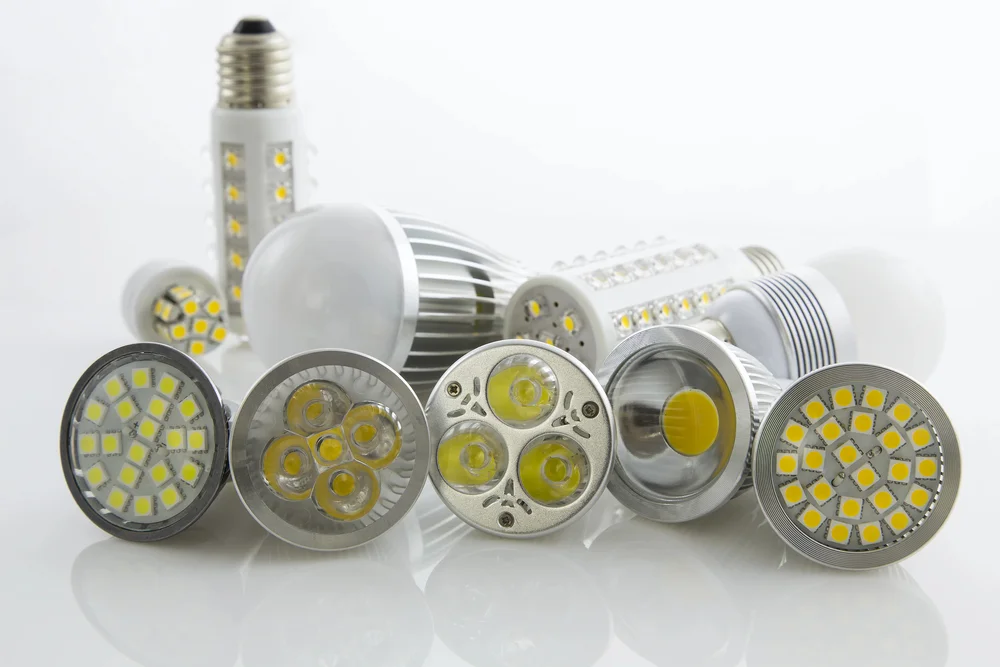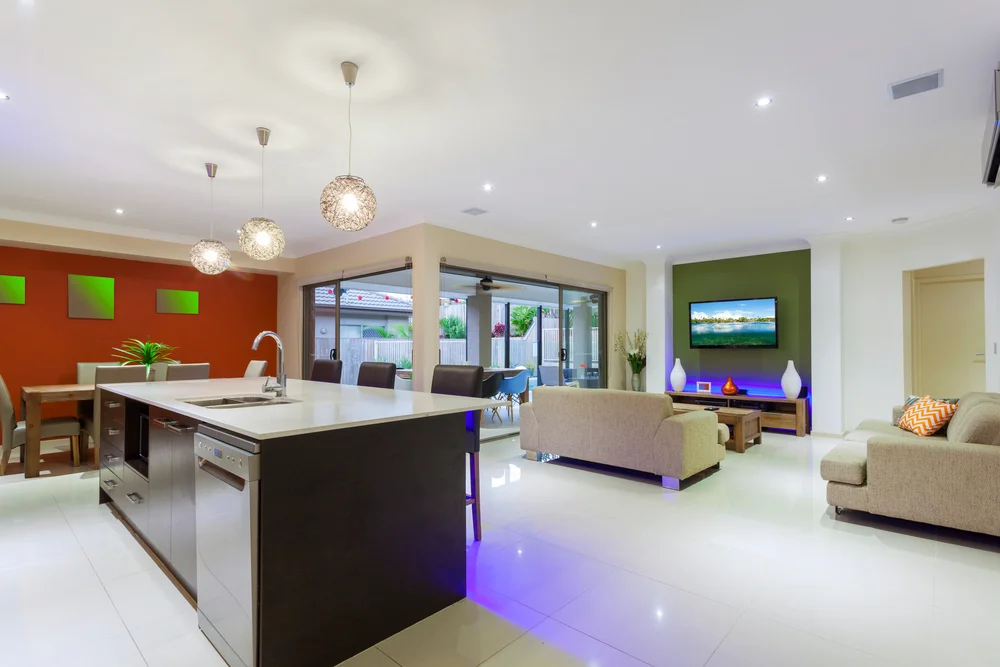The Benefits of LED Lights for Energy Efficiency and Savings
LED lights, less commonly known as light-emitting diode lights, are the most energy-efficient form of lighting on the market today. When you invest in an LED bulb for things like LED ceiling lights or LED strip lights, you’ll have a longer-lasting and more durable bulb that offers energy efficiency beyond any other bulbs on the market.
Types of LED Lights and Their Applications
There are several types of LED lights which serve multiple applications.
LED Ceiling Lights
LED ceiling lights are those that are installed in the ceiling, as the name suggests. LED ceiling lights can be successfully installed in any room by providing lighting from above, running the length of the room. You have greater control over how many light bulbs are installed at various points in the room, which goes a long way toward controlling how warm or bright a space is and helps you reduce energy consumption.
Moreover, LED ceiling lights can be installed flush with the ceiling so that they are completely flat and don’t hang down, taking up too much space in the room.
LED Strip Lights
LED strip lights are a way to add light to places that might be slightly less accessible. LED strip lights can be installed underneath cabinets to provide lighting downward over a counter. They can be installed in tight spaces tucked away underneath a staircase to provide downward-facing light along the floor.
Many people enjoy the use of LED strip lights because they can be installed in smaller sections, bent at different angles to cover spaces that traditional lights can’t, with a low profile. They have added protections and features like dimmability, and you can cut them to length so that they fit any room, space, cabinet, or other feature.
LED Bulbs
LED bulbs are light bulbs that can be installed in existing features in your home. These are easier to incorporate if you are trying to switch over to LED lights because they save you energy with reduced power usage without having to invest in new light fixtures.
However, they can easily be incorporated into existing light fixtures, while things like LED strip lights are incorporated into areas that previously didn’t have any lights, like under your countertops or inside the cabinets of a vanity.

The energy efficiency of LED Lights
So, how do LED lights actually result in energy efficiency compared to traditional lighting?
LED lights rely on an electrical current to emit light. This electrical current goes between a negative and positive charge, referred to as electroluminescence. It uses nearly all of the energy in that bond to create light.
Only 5% of the energy that is used gets wasted in the form of heat rather than light. This is much better than traditional lighting. Incandescent lights give off 90% of the energy they create in the form of wasted heat, which means that only 10% goes toward creating light, as opposed to LEDs, where 95% goes toward creating light.
LED lights even have longer lifespans. The longer lifespan means that you can capitalize on the electroluminescence, the directional lighting, and the reduced power usage for significantly longer. Traditional light bulbs might last a few years if you use them regularly, but by comparison, LED bulbs can last 25 times that.
Factors contributing to energy efficiency
There are several factors contributing to energy efficiency for LED strip lights and LED bulbs.
Lower power consumption
LED lights emit light in a different shape compared to traditional lighting. Regular bulbs send light in all directions which includes the ceiling and beyond, but LED lights only emit in a 180° cone, which means that they produce better lighting directionally, so none of the lighting gets wasted.
Tangentially, LED lights use less power while still producing the same amount of light. If you have an 84-watt traditional bulb, it might give you the same amount of light that you could get from a 36-watt LED bulb, which means you are using reduced wattage, which reduces the power consumption and, subsequently, your energy bill without compromising the amount of light you get in a room.
Higher lumen output per watt
Speaking of wattage, on average, LEDs produce 100 lumens per watt. This is a measurement used to describe how efficiently light is produced from a given light source. The higher that rating, the greater the efficiency.
This rating is seven times higher compared to traditional incandescent light bulbs which means that the higher output is seven times brighter compared to regular light bulbs.
Reduced heat production
As mentioned, one of the biggest differences between LED lights and traditional lights is the heat. LED strip lights can help you maximize the amount of energy in each bulb that gets used as light rather than warmth.
This means that more of the power goes into lighting, so you get brighter light, using less energy.

Cost Savings with LED Lights
- LED lights are high-efficiency lighting technology that uses an average of 75% less energy compared to incandescent lights.
- LED ceiling lights or any other
- LED bulbs can save households an average of $225 annually on energy costs.
They are also more energy efficient compared to traditional incandescent lighting because they last up to 25 times as long.
Governments anticipate that the majority of lighting installed in homes by 2035 will use LED lights. This could result in an annual energy savings of 569 TWh, which is the same as the annual output of over 92 1,000 MW power plants. A TWh, or terawatt hour, is a unit of energy. It is used to measure how much electricity is consumed or produced. A terawatt hour is the same as one million megawatt hours.
Environmental Benefits of LED Lights
LED lights also come with environmental savings. The reduced energy consumption means that you can reduce your carbon footprint. The reduced carbon footprint means fewer greenhouse gasses compared to things like incandescent light bulbs.
In fact, the average family installing LED lights can reduce their carbon footprint by 1/3 by switching.
LEDs are also non-toxic, and they don’t traditionally contain chemicals and compounds like mercury in fluorescent light bulbs. This means it’s safer for your health and the environment and safer for your home.
There is no UV radiation emitted from LED lights, which is not only a benefit for your health but also one that can help prevent damage to things like paintings or silks.
Health and Safety Benefits of LED Lights
With LED lights, you can reduce depression, especially during the darker seasons, with brighter lighting in your home. The way in which LED lights mimic natural daylight can also encourage regulation of your circadian rhythm, which reduces stress and improves sleep.
As mentioned, you don’t have to contend with potential toxins or UV radiation either.
Tips for Choosing and Installing LED Lights
When you are choosing the right type of lighting for your space, consider your needs. Are you looking for a way to make work in your kitchen significantly safer by Illuminating the countertops? If so, smaller LED strip lights might be a better investment. If, instead, you are simply looking for a replacement for an outdated chandelier or ceiling fan/light combo, new LED ceiling lights might be better.
Summing Up
There are several key benefits of LED lights, such as energy efficiency and savings. You can enjoy health and safety benefits, reduced energy consumption, a better environmental footprint, and much more. Don’t hesitate to consider LED lighting solutions for both residential and commercial use. Doing so can help make energy-efficient choices for a sustainable future.
